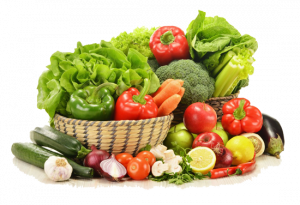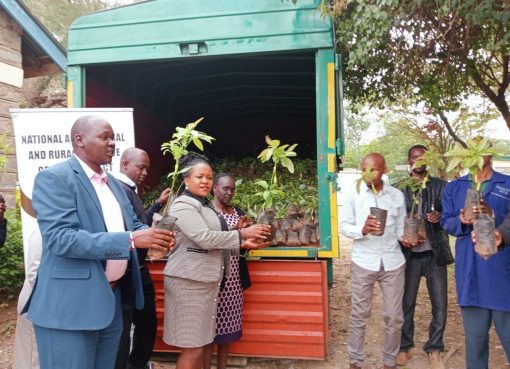Kenya has stockpiled enough grain reserves to sustain the country until the end of June.
Agriculture, Livestock and Fisheries Principal Secretary Prof. Hamadi Boga however said the country the current stocks are likely to be supplemented by imports and harvests from the long rain season.
He said the country had finalized plans to import at least two million bags of maize to supplement the supplies from the domestic market.
Speaking during a webinar discussion on Food Security and post Covid 19 organized by the Konza techonopolis, Prof. Hamadi Boga revealed that the ministry was monitoring stock levels and quality to project future requirements to ensure that the supplies met the local demand.
“The government is working on nine potential intervention to ensure that food security was guaranteed during the Covid 19 crisis by developing strategies and guidelines to facilitate smooth supply of staple nutritious foods at affordable prices for a majority of the population”, he said .
Prof Boga said the management of food security at both the national and county government during the emergency period was critical and called for timely collection and sharing of data and information across all levels of government.
Data collection has been a challenge for future planning of securing food security in the country to ensure that steady supply curve was maintained in the domestic market to keep prices of agricultural goods stable.
“We want to ensure availability, accessibility and affordability of food and other basic needs during this period by maintaining steady supply of agricultural products and ensure that value addition was also prioritized to improve returns to farmers”, he said .
Prof. Boga expressed optimism that the country had made tremendous progress in setting up the stage for Food Security saying mechanism to set tracking of food stock in sixteen counties was ongoing..
He said the initiative had recorded needed data on 45 selected markets across the country by taking price trends over the last two weeks in some 10 counties.
Although Data from the 16 counties indicates food commodities were readily available at the county level, Prof Boga said the overall outlook may only emerge after reports from all pending counties were tabulated.
“Food availability has only been reported by 16 counties which represent 30 percent of the country’s food demand. These counties have sufficient supply of maize, rice, sorghum, millet, beans and potatoes but have are likely to have a shortage of wheat in the short-term”, he said
There are conversations with the CECs and county level stakeholders to understand the root cause of the shortages and where they exist but stressed on the need for urgent submission of data by the remaining 30 counties
The PS said 40 out of 45 key markets under surveillance have however recorded fluctuations in prices and supply although the changes were not significant.
He added that a template has also been shared with the CECs for tracking market status, food prices and food stock levels which are submitted to the national desk on a weekly basis.
On prices of key commodities that have been increasing across all reporting counties, the PS said that data pending from most counties will further help in determining the price trends across the country
“Complete prices has only been reported by 10 counties which represent 20 percent of the country’s population and food prices against all tracked commodities increased especially beans, green grams and tomatoes”, he said
Counties in Western Kenya such as Homabay exhibited the highest price increases of between 20 percent and 50 percent for cereals and legumes probably as a result of the closure of the Kenya – Uganda border, Prof Boga said .
“There is therefore urgent need for submission of data by remaining 37 counties and conversations with CECs and stakeholders is ongoing to understand the root cause of the prices increases”, he said.
Prof Boga said the country’s projection was to reduce the percentage many households spent their income on food, from the current 45% to 25% by 2022, when the number of food insecure families is also expected to reduce by half.
“ We envisage that half the number of food insecure Kenyans go down from ten to five percent as we strive to also reduce cases of chronic malnutrition among children under five years-from 26 percent to 19 percent” he said.
He said by doing so the agricultural sector is expected to increase contribution to the GDP by 48 percent from Ksh 2.7 Trillion to 4 Trillion by the year 2022.
With the improved production and market trading at optimum the SMEs are projected to create additional 1,000 jobs in the processing sector while an addition 600,000 direct and indirect vacancies will be created in the supply chain.
He said the average daily income of, Farmers, Fishermen and Pastoralists is expected to increase from Ksh 465 to Ksh 625 by 2022.
Prof Boga said the ministry had prepared a Covid 19 work plan on the guidelines other agencies including the police, County Commissioners, producers and processors were to adhere to if the pandemic persisted over the next two months to ensure that movement of produce was not disrupted in the East African Level , COMESA and also Globally
Kenya Agricultural Livestock Research Organization (KALRO) Director of Information and Communication Technology (ICT) Boniface Akuku said innovation was key in addressing the challenges posed by the outbreak of coronavirus. .

“The only way we can use technology to promote agriculture is to evaluate the crop data which can be broken down into bits and bytes to give better understanding about the crop development to improve and address arising challenges” he said.
As KALRO, he added that using big data platform will see over 400,000 farmers who are registered be able to access information.
“The big data predicts what is to happen and once we consolidate research data and put them in one data base we will understand where the stakeholders are and using technology connection to farmers and buyers
Akuku noted that basically what farmers needed to know is answered on a click of a button especially the three basic questions of what, when and how to grow their crop based on existing data of a particular scenario that were previously collected over a period through monitoring and predictions.
Dr. Rosabella Langat, entrepreneur and coffee dealer said market information systems among farmers was key in equipping front line farmers on promising market outlets.
“A lot of crops being produced by farmers are not getting into the market because of transportation and with this Covid 19, things are not getting any better”, she said
Dr. Langat called on the government to set up community low level pick up drop off points for collection of food from farmers now that the Covid 19 containment measures have be adhered to such as road blocks
Farmers she said can be able to access technology where the market is and where they can drop off their produce to get to the markets.
Josephine Ngethe, an innovator in the ICT platform, said innovation is the way to go and ICT can be able to harmonize information all under one roof where they can get the information they need to promote their sales and at the same time get the farm inputs and equipment.
By Wangari Ndirangu





